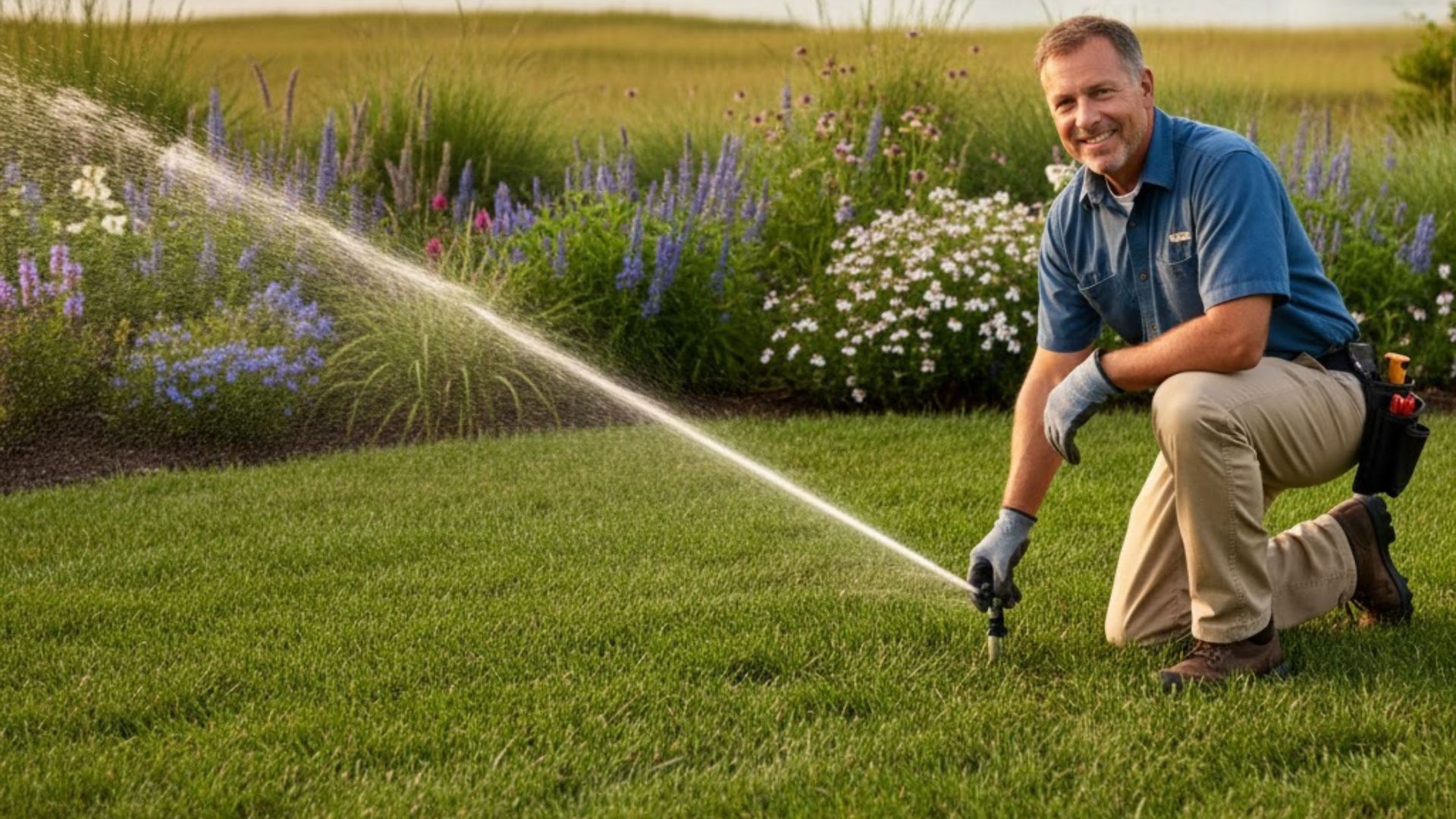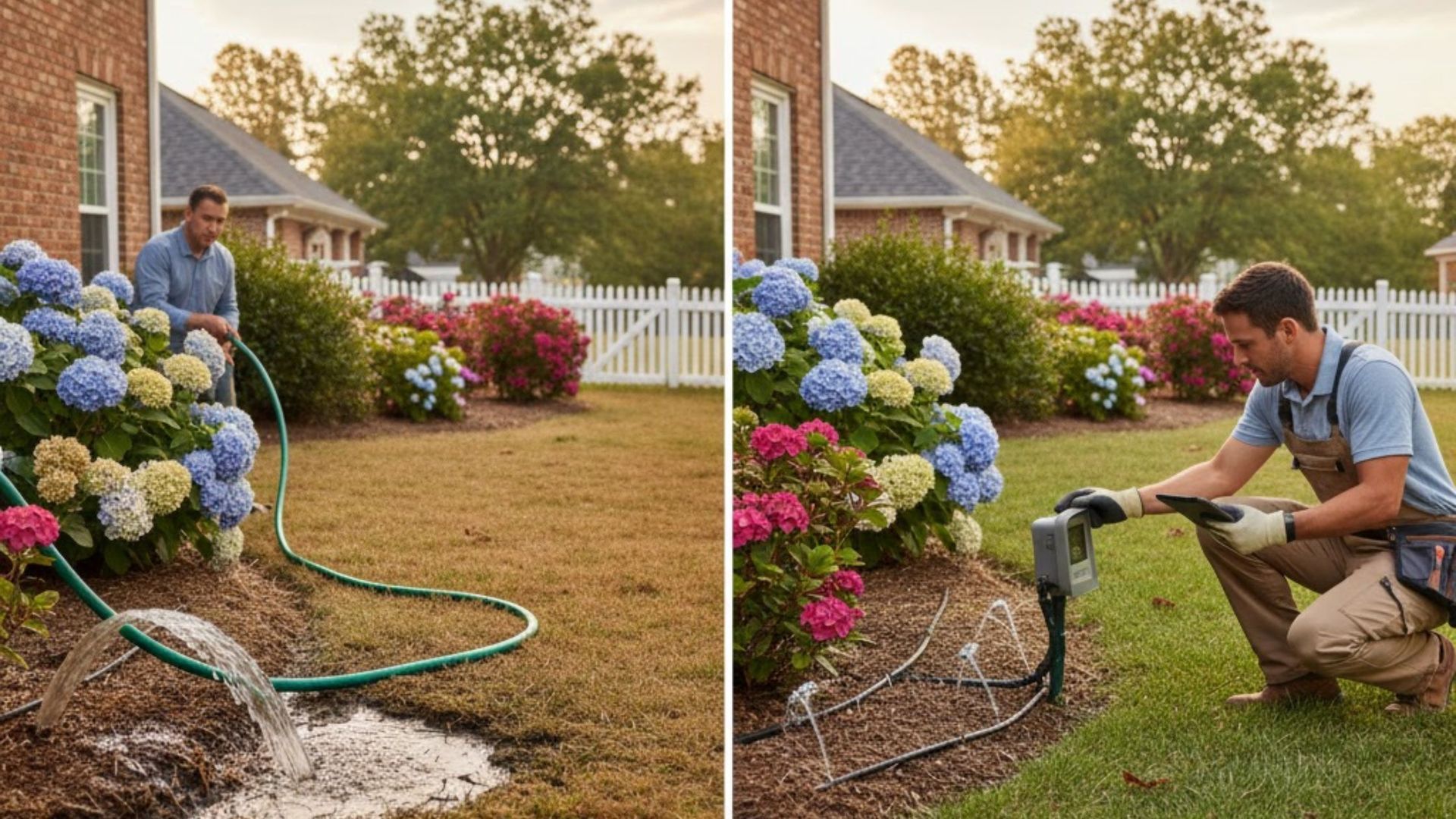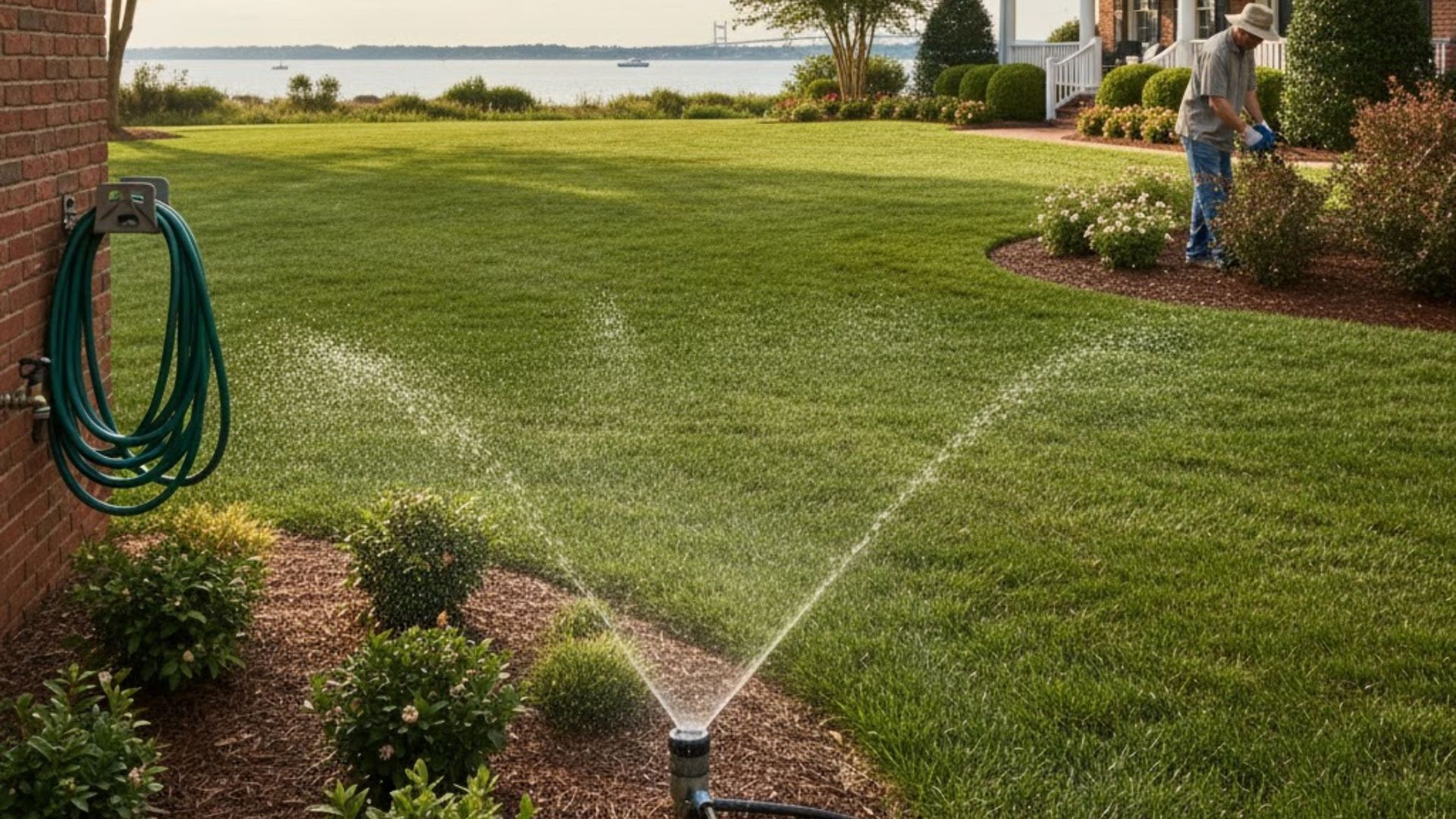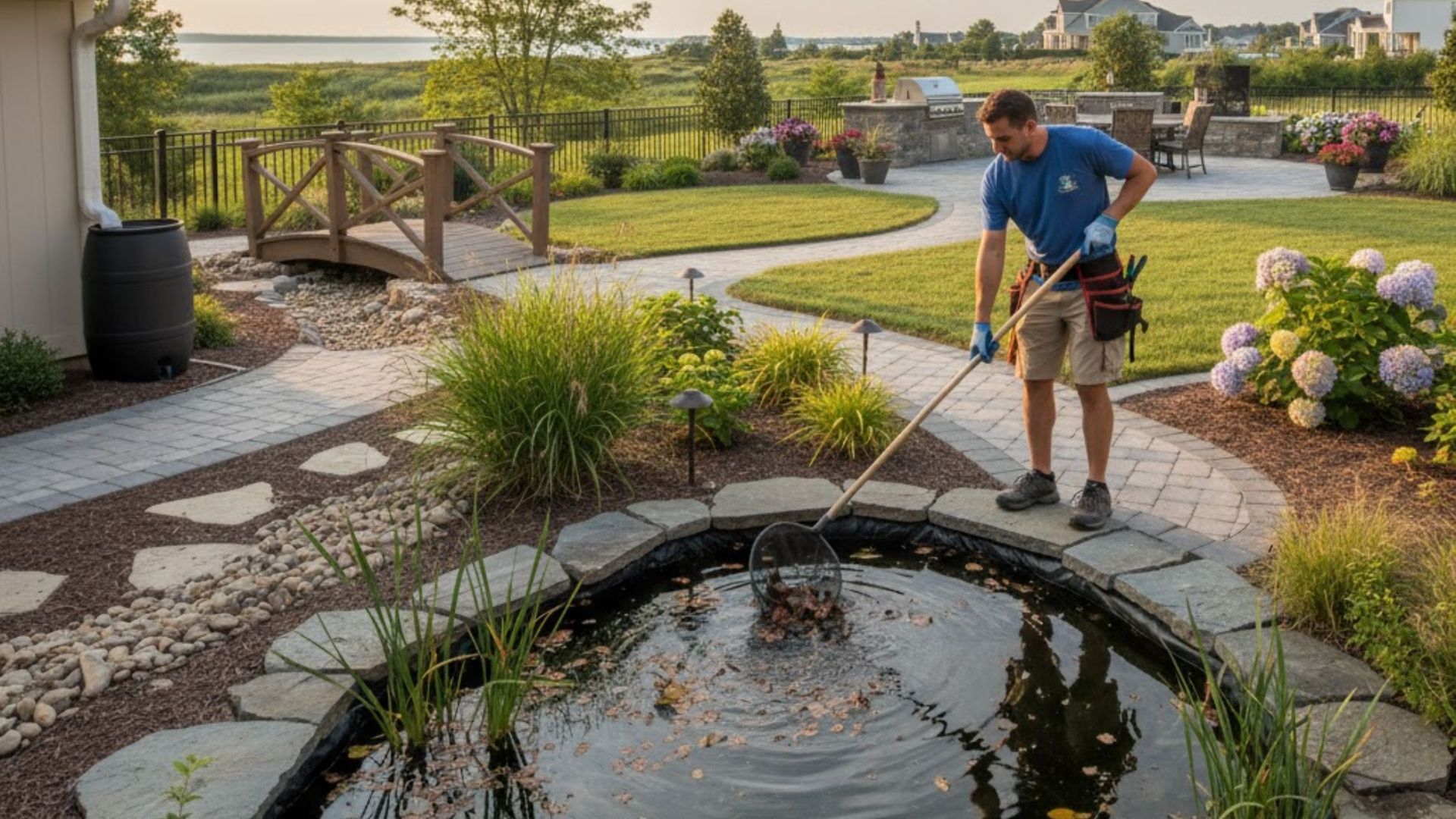Why Your Hose, Soaker System, or Garden Beds Aren’t Watering Evenly — and How a Handyman Can Correct It
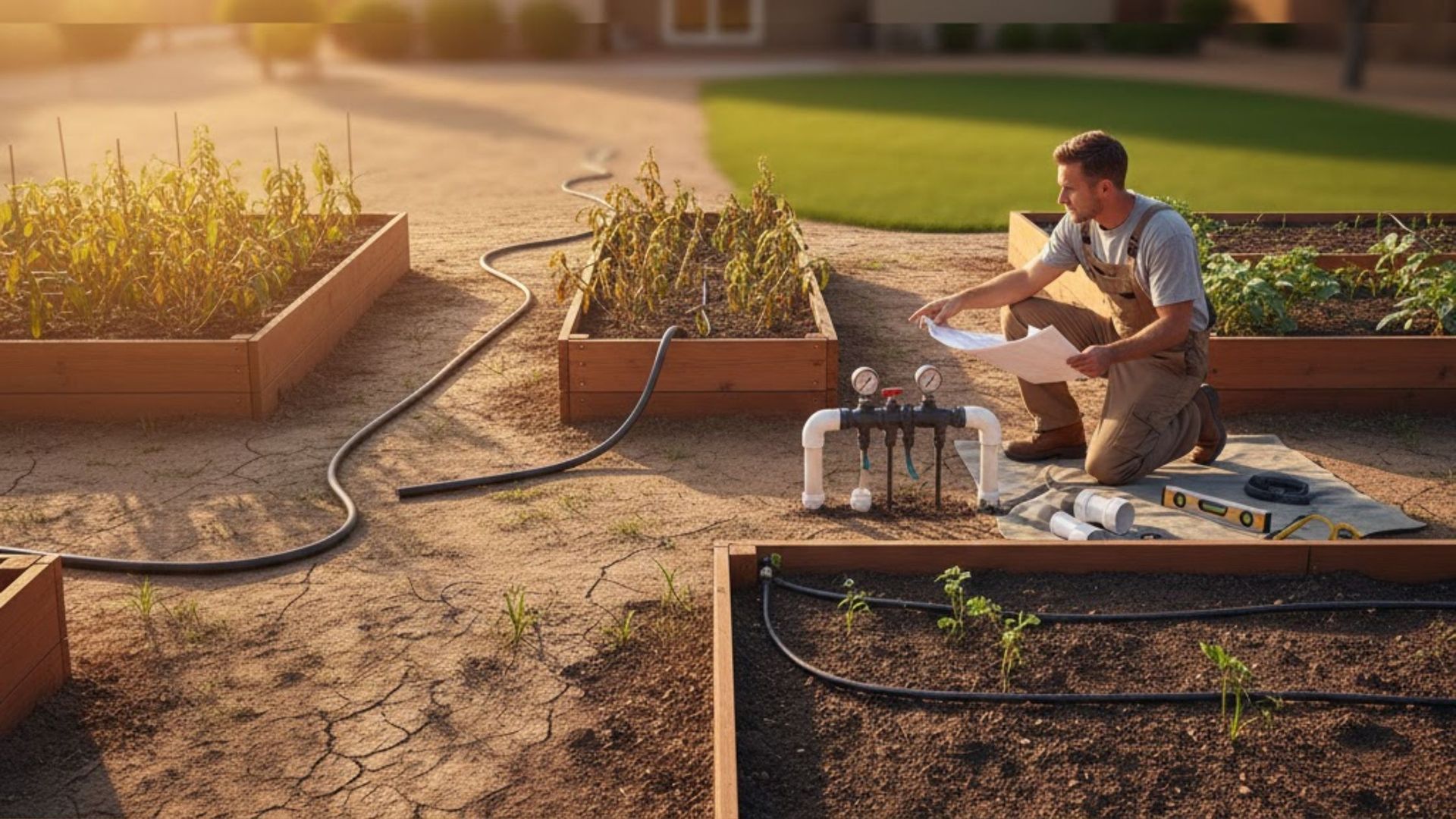
If you’ve spent countless hours meticulously planning and planting your garden beds, only to find that your watering system is failing to deliver consistent moisture, you are certainly not alone. It is deeply frustrating when one section of your prized vegetables is lush and vibrant while another patch looks wilted and dry, especially after investing in what you thought was a reliable hose or soaker setup. The good news is that these uneven watering issues are rarely catastrophic system failures; instead, they are usually the result of easily identifiable and correctable imbalances in physics, system design, or component performance. Getting this balance right is crucial for plant health and water conservation, and often requires the specialized eye of a professional who understands the specific environmental demands of the Coastal Virginia region. When you need expert help balancing your system, a skilled Landscape Handyman Water Services specialist can diagnose and fix the root cause quickly, ensuring every plant gets the hydration it needs.
Solving uneven water distribution in your garden, whether from a hose, soaker system, or drip irrigation, almost always comes down to two primary factors: water pressure regulation and hydraulic design flaws. High pressure can force water out too quickly at the beginning of a line, leaving the far end dry, while improper layout, such as running a hose uphill or having excessive length, works against the natural movement of water. A certified professional can adjust pressure-reducing valves, install flow restrictors, and redesign the layout to ensure even seepage and deep, consistent root hydration, which is vital for gardening in the challenging soil compositions found across Hampton Roads.
Why Does My Soaker Hose Not Water Evenly Across Its Entire Length?
The uneven performance of soaker hoses is one of the most common complaints among home gardeners, and the direct answer is usually uncontrolled water pressure and excessive length. Soaker hoses rely on a slow, consistent seepage of water through porous walls. When water enters the hose under high pressure, it immediately expands the micro-pores near the connection point, causing the water to weep or even spray aggressively at the start, while leaving insufficient pressure for the water to travel and exit uniformly at the far end.
The principle is simple fluid dynamics: water takes the path of least resistance. In a soaker hose system, the easiest exit point is always closest to the source. This is why addressing the pressure at the main connection is the first and most vital step toward achieving garden watering repair Hampton Roads homeowners can count on. Ignoring this step leads to perpetual frustration and wasted water. When you partner with a dedicated Landscape Handyman Water Services professional, they immediately look at the physics of the water flow.
The Critical Role of Pressure Regulation and Flow Restrictors
Most residential properties in Coastal Virginia operate with water pressure between 40 and 80 PSI (Pounds per Square Inch). However, soaker hoses and drip irrigation systems are only designed to function effectively at very low pressures, typically between 10 and 25 PSI. Introducing water at 60 PSI will overwhelm the system’s capacity.
- Pressure-Reducing Valve (PRV): The essential component for regulating water input is a small, inexpensive pressure-reducing valve, often rated at 15 PSI. This device screws directly onto the outdoor spigot or faucet before the soaker hose connection.
- Restrictor Disks: Many soaker hose kits include a tiny restrictor disk or washer with a small hole. This is designed to fit inside the hose coupling at the water source. It helps limit the overall flow volume, acting as a crucial internal gate to prevent the hose from bursting or spraying aggressively near the faucet.
- Proper Placement: Crucially, if you connect multiple soaker hose segments together, you only need the pressure-reducing device or restrictor disk on the very first hose connected to the water source. Removing restrictor disks from all subsequent connected hoses is essential to maintain flow continuity through the entire length.
If your system runs for 30 minutes, and the beginning of the soaker hose has created a shallow puddle while the end is barely damp, you have a classic pressure mismatch. This is where a professional touch makes all the difference, ensuring the entire length of the soaker hose weeps consistently for deep soil saturation.
Understanding Soaker Hose Length Limitations
The physical length of your soaker hose run directly impacts its performance. Even with perfect pressure regulation, the friction of the water moving through the porous conduit causes the pressure to drop the farther it travels.
- Maximum Efficient Length: Most manufacturers and experienced garden watering repair Hampton Roads specialists agree that the maximum effective run for a single soaker hose line is around 100 to 150 feet. Beyond this length, the terminal end simply won't receive enough water volume to seep properly.
- Mitigation Strategy: For larger garden beds, instead of connecting hoses end-to-end beyond the length limit, it is better to split the run into multiple, shorter zones, each with its own water source or manifold connection. This ensures even hydraulic performance across the entire planting area.
If you have a 200-foot-long bed, don't use one 200-foot hose. Instead, use two 100-foot hoses connected in parallel to the same source (or manifold) for equal and efficient water delivery. This is a common solution implemented by HR Irrigation when optimizing large-scale residential gardens.
How Do Elevation Changes Impact Water Distribution in Garden Beds?
Water always flows downhill, and this fundamental force of gravity is the unseen enemy of even watering systems. Any difference in elevation, no matter how subtle, will inevitably cause the lower sections of your soaker hose or drip line to receive significantly more water than the higher sections.
- The Gravity Effect: If your garden bed slopes, water traveling through the line will naturally pool and exit preferentially from the lowest available holes or drippers. The uphill portion of the line may appear completely dry, even if the flow is technically "on."
- Handyman Solution: Landscape Grading: For systems like soaker hoses, which are highly sensitive to grade, the most permanent solution is sometimes to adjust the landscape itself. A skilled handyman can perform minor Landscape Handyman Water Services like regrading or land leveling within the garden bed to ensure the soaker line lies on a flat plane, allowing gravity to work with the water pressure, not against it.
- The Drip Irrigation Alternative: In sloped landscapes where regrading is impractical or undesired, pressure-compensating drip irrigation tubing is the preferred solution. These emitters are engineered to release a specific, fixed amount of water (e.g., 0.5 or 1.0 GPH) regardless of the pressure fluctuations caused by elevation differences. This technology is superior for large, uneven properties.
Understanding the unique micro-geography of your yard is essential. The coastal plains of Hampton Roads might appear flat, but minor dips and rises can severely compromise a simple soaker hose setup.
Troubleshooting Specific System Types: Hoses, Soakers, and Drip Lines
Uneven watering problems manifest differently depending on the hardware you use. Diagnosing the issue requires a systematic approach to each component of the system.
Hoses (Traditional & Sprinklers)
Traditional garden hoses primarily deliver water to a sprinkler head or sprayer, which then distributes the water across an area. Problems here are usually mechanical.
- Kinking and Twisting: If your traditional hose is unevenly watering a sprinkler, check for kinks or tight twists in the line between the spigot and the sprinkler head. A severe kink acts as a major flow restrictor, reducing the pressure at the sprinkler head and affecting the spray pattern.
- Clogged Nozzles: Sprinkler heads, especially oscillating types or those with small rotary jets, are prone to clogging. Sediment, dirt, or tiny pieces of debris can block the nozzles, leading to thin, uneven jets of water or dead spots in the coverage area. Regular cleaning or replacement is the only fix.
Soaker Hose Troubleshooting Hampton Roads
When dealing with soaker hose troubleshooting Hampton Roads gardens often face, the focus should remain on pressure, air, and proper installation.
- Air Pockets: When you first start a soaker hose, the line is full of air. Water will immediately exit the easiest pore near the faucet, but the air trapped further down will prevent the water from reaching the end. To correct this, temporarily remove the end cap, turn on the water until a steady stream flows out the end, then replace the cap. This "bleeds" the air from the line.
- Sediment Clogging: Over time, fine particles in the water can clog the tiny pores of a soaker hose. If the hose has worked well previously but is now only wetting the first half, try flushing the hose. Remove the end cap and turn the water on full for a few minutes to blast out any accumulated debris.
Drip and Micro-Irrigation Systems
Drip systems are generally more precise than soaker hoses but introduce their own complexities involving filters, emitters, and main lines.
- Clogged Emitters: This is the number one issue in drip systems. Calcium deposits, mineral build-up, or dirt can block the small openings in the emitters (drippers). If you see a dry spot next to a specific plant, the emitter is likely clogged. Replacement or careful cleaning with a vinegar solution is usually required.
- Line Size Mismatch: Using lines that are too small (e.g., 1/4-inch micro-tubing) as a main supply line for a large area will result in dramatic pressure loss. The main supply line (usually 1/2-inch or larger poly tubing) should be appropriately sized to support all the connected drippers without significant flow restriction.
Proper soaker hose troubleshooting Hampton Roads systems involves checking all these points, starting from the water source and moving through the main line, and finally inspecting individual delivery points.
Comprehensive Entities Influencing Water Consistency
To truly achieve a fully optimized watering system, we must consider the broader ecosystem that affects water movement and plant uptake. These entities are all interconnected and need to be managed holistically.
- Soil Texture and Composition: The makeup of your garden bed's soil, whether clay-heavy, sandy, or loamy, significantly changes how water is absorbed and retained. Sandy soils drain too quickly, requiring more frequent, shorter water cycles, while clay soils absorb slowly and can suffer from waterlogging, needing longer, less frequent watering. Incorporating organic matter, like compost, improves water-holding capacity across all soil types.
- The Garden Ecosystem: The types of plants, their root systems (shallow-rooted annuals vs. deep-rooted perennials), and the amount of sun/shade they receive all dictate their hydration needs. Watering a sun-drenched vegetable patch the same way you water a shaded bed of ferns will always lead to uneven plant health.
- Atmospheric Conditions: Temperature, humidity, and wind speed directly influence the rate of evapotranspiration—the process by which plants release water vapor and water evaporates from the soil. On hot, windy days, a system that typically runs for 30 minutes may need to run for 45 minutes to achieve the same soil saturation.
- Filtration and Source Quality: If your water source contains high mineral content (hard water) or sediment, this will dramatically increase the rate of clogging in drippers and soaker hose pores. Installing a simple mesh filter at the beginning of the system, after the pressure regulator, can capture particles and extend the lifespan and efficiency of your entire irrigation system.
A professional offering Landscape Handyman Water Services considers all these factors—from the hard physics of water pressure to the soft science of soil biology—when developing a tailored watering plan for your property.
Is My Watering System Too Long for the Water Source?
Yes, absolutely. System size is a major contributor to poor performance. If you find yourself consistently needing garden bed water flow adjustment Hampton Roads gardens, it often points to a system design that exceeds the volume capacity of the water source.
Consider the metaphor of a highway: a 100-foot soaker hose is like a five-lane highway; water moves freely. A 300-foot hose attached to the same source is like narrowing that highway down to one lane; traffic slows down, and only the cars at the front get through quickly. The total flow required to sustain all the drippers or pores in a long system simply exceeds the capacity that can be maintained at the far end.
Calculating the Capacity of Your System
You can roughly calculate the required capacity by looking at the flow rate of your components.
- Soaker Hoses: A standard soaker hose weeps at a rate of approximately 0.5 to 1.0 gallons per foot, per hour. A 100-foot run might demand 50 to 100 GPH (Gallons Per Hour).
- Drip Emitters: Drip systems use GPH to measure output (e.g., 1 GPH, 2 GPH). If you have fifty 1 GPH emitters, your system requires 50 GPH.
If your total system demand exceeds what a standard residential spigot can deliver at low pressure, you will always have uneven watering. The solution is dividing the system into multiple zones, each run separately by an automated timer, which is a core part of professional garden watering repair Hampton Roads systems require.
What Are the Best Ways to Achieve Garden Bed Water Flow Adjustment Hampton Roads Homeowners Need?
Achieving optimal garden bed water flow adjustment Hampton Roads residents can benefit from involves a combination of manual, mechanical, and systemic changes to how water is applied. It is not just about fixing a leak; it is about balancing the entire delivery process.
- Zoning and Automation: The most effective method is dividing your garden into distinct zones based on planting type (e.g., vegetable garden, perennial border, container plants) and linking each zone to a multi-channel automated timer. This allows you to set different watering durations and frequencies for each specific area.
- Emitter Replacement: In drip systems, physically changing the flow rate of emitters is a direct adjustment. If an area is consistently too wet, replacing a 2 GPH emitter with a 0.5 GPH emitter is a simple, effective change.
- Valve Manipulation (The Faucet Trick): For simple soaker hose setups without a dedicated PRV, the "barely open" faucet trick can manually reduce pressure, though this is inconsistent. A handyman will advise strongly on installing a fixed-pressure regulator for reliability.
The expertise provided by HR Irrigation ensures that every adjustment is made with precision, maximizing water efficiency while promoting robust plant growth throughout your landscape.
Frequently Asked Questions About Watering System Performance
Homeowners in the Hampton Roads area often have specific concerns about their watering setups. Here are answers to some of the most common inquiries.
What is the ideal watering time for a vegetable garden in the summer?
The ideal watering time is usually between 4:00 AM and 6:00 AM. Watering early in the morning allows the moisture to soak deep into the soil before the sun's heat causes excessive evaporation, and it leaves the plant foliage dry during the day, which helps prevent fungal diseases like powdery mildew. Watering in the late evening is a distant second, as wet leaves overnight can encourage disease.
Is it better to water daily for 15 minutes or twice a week for an hour?
It is nearly always better to water less frequently but more deeply, such as twice a week for an hour, especially for established plants. Short, daily watering cycles only dampen the top layer of soil, encouraging shallow root growth that leaves plants vulnerable to drought. Deep, infrequent watering trains the roots to grow far down into the soil, creating more resilient and water-efficient plants.
Can old hoses or lines affect my water pressure?
Yes, older hoses and lines can absolutely reduce the effective water pressure and volume of your system. Interior walls of older rubber or vinyl hoses can degrade, creating friction and resistance that slows down the flow. Furthermore, mineral deposits, such as calcium and iron, can build up inside the lines over years of use, reducing the internal diameter and significantly restricting the volume of water that can pass through.
Why do I have wet spots in my yard but my garden beds are dry?
Wet spots in the lawn that persist after a light rain or watering often indicate a drainage problem or soil compaction, particularly in the high-clay content areas sometimes found near the coast. This is a separate issue from your irrigation system performance. It means the water cannot percolate downward effectively. Meanwhile, your raised garden beds, which usually contain better draining soil, may dry out quickly, necessitating separate garden watering repair Hampton Roads focus. Addressing drainage often requires professional grading or the installation of French drains, which is often an adjunct service provided by a specialist.
Should I remove the end cap from my soaker hose to increase flow?
No, you should keep the end cap securely on. Removing the end cap turns the soaker hose into a standard open-ended hose that will dump all its water out the far end, completely defeating its purpose of slow, uniform seepage. The cap is essential for creating the internal back-pressure needed for the water to be forced out evenly along the entire length of the hose.
The Professional Advantage: When to Call a Specialist
While homeowners can often solve simple issues like a clogged emitter or a slightly kinked hose, many common watering problems require advanced diagnostic tools and system-level redesign. You need more than just a quick fix; you need a permanent solution that ensures the long-term health of your landscape.
- Pressure Management: Professionals use specific gauges to measure the dynamic water pressure at various points in your system, ensuring the regulator is set correctly for your system’s total flow rate and length.
- Hydraulic Redesign: For complex layouts—like multiple raised beds, terraced gardens, or large perimeter plantings—a specialist can design a multi-zone system with manifold hookups and appropriate pipe sizing to ensure true hydraulic balance.
- System Upgrades: If you are still relying on a basic soaker hose for a large, sloped area, a professional will recommend and install the best technology for the job, such as pressure-compensating drip tubing or low-volume micro-sprinklers.
If you are tired of inconsistent results and wasting water, consider reaching out to a professional offering Landscape Handyman Water Services in the area. We have seen every garden watering repair Hampton Roads problem imaginable, from simple clogged heads to complex valve malfunctions. Our goal is to make your system efficient and your garden thrive.
The Landscape Handyman Water Services Difference: Detailed Installation and Maintenance
Choosing the right partner for your garden's hydration needs means selecting a company that views water management as both a science and an art. The difference between a thriving garden and a struggling one is often found in the small details of your irrigation setup. We specialize in precision installation, seasonal optimization, and timely maintenance to keep your systems running flawlessly.
When you engage with our team at HR Irrigation, we perform a thorough property audit. This involves walking your entire landscape to understand the flow of water, the slope of the land, the pressure at your main water source, and the specific needs of your varied plant material. We don't guess; we test and calculate to eliminate dry spots forever. Our commitment to excellence is why we encourage you to check out our reviews to see what your neighbors are saying about our detailed approach to water system care.
Seasonal Adjustments and Winterization in Coastal Virginia
The distinct seasons of Coastal Virginia, with humid summers and potential winter freezes, necessitate specialized system care. A system optimized in May will be over- or under-performing by August if left unattended.
- Spring Start-Up: We carefully turn the system on, check all lines for winter damage, test the pressure regulator, and ensure all drippers and spray heads are functioning correctly and free of debris.
- Mid-Summer Optimization: During peak heat, we adjust watering duration based on the actual evapotranspiration rates observed in the region, often increasing run times to drive water deeper to the root zone while adhering to any local watering restrictions.
- Fall Shutdown and Winterization: This is perhaps the most critical service. We properly drain or blow out all lines and components to prevent residual water from freezing and cracking the pipes, valves, and emitters during cold snaps—a common and expensive issue in Hampton Roads.
For all your irrigation needs, trust the dedicated team at HR Irrigation. We provide reliable service and expert knowledge to protect your landscape investment. For an in-depth look at our specialized services, you can review our full offerings on Landscape Handyman Water Services.
Essential Upgrades for Long-Term Water System Health
If your current system requires continuous garden watering repair Hampton Roads is a great place to invest in reliable upgrades that solve problems permanently. Modern irrigation technology is designed to compensate for the very issues that plague older, simpler hose setups.
- Smart Controllers: These devices connect to local weather stations or use on-site soil moisture sensors to automatically adjust your watering schedule. If it rained overnight, the controller skips the scheduled cycle, saving water and preventing overwatering. This eliminates the guesswork of seasonal adjustments.
- Pressure-Compensating Emitters: As mentioned, these emitters are essential for slopes or long runs. They ensure that the plant at the beginning of the line receives the exact same volume of water as the plant at the end, regardless of pressure differences in the system.
- In-Line Filters: A high-quality filter installed immediately after your backflow preventer or spigot connection is the best defense against clogging, extending the life of your drippers and soaker hoses significantly. Regular filter cleaning is a simple maintenance task that pays huge dividends in system performance.
These systemic improvements are what elevate a basic garden hose setup into a professional, efficient irrigation solution. To begin improving your system today, contact us and let us know about your current watering challenges.
Achieving Perfect Hydration for Your Hampton Roads Landscape
Uneven watering is more than just an inconvenience; it leads to stressed plants, wasted water, and an inefficient use of your gardening time. Whether the issue is a simple matter of high water pressure forcing water out too early in a soaker hose or a complex hydraulic imbalance across a large garden bed, the solutions involve precision, calculation, and specialized expertise.
By understanding the role of pressure regulators, respecting the length limitations of your system, and accounting for the specific soil and elevation characteristics of your property, you can move toward a perfectly hydrated landscape. When you need expert design, installation, or repair, the professional services of a Landscape Handyman Water Services specialist can make all the difference. We invite you to learn more about our comprehensive approach to water management and garden health by visiting our brand page: HR Irrigation. If you are ready to put an end to dry spots and achieve a consistently lush garden, please reach out. We would be happy to discuss your unique situation and provide an efficient solution.


